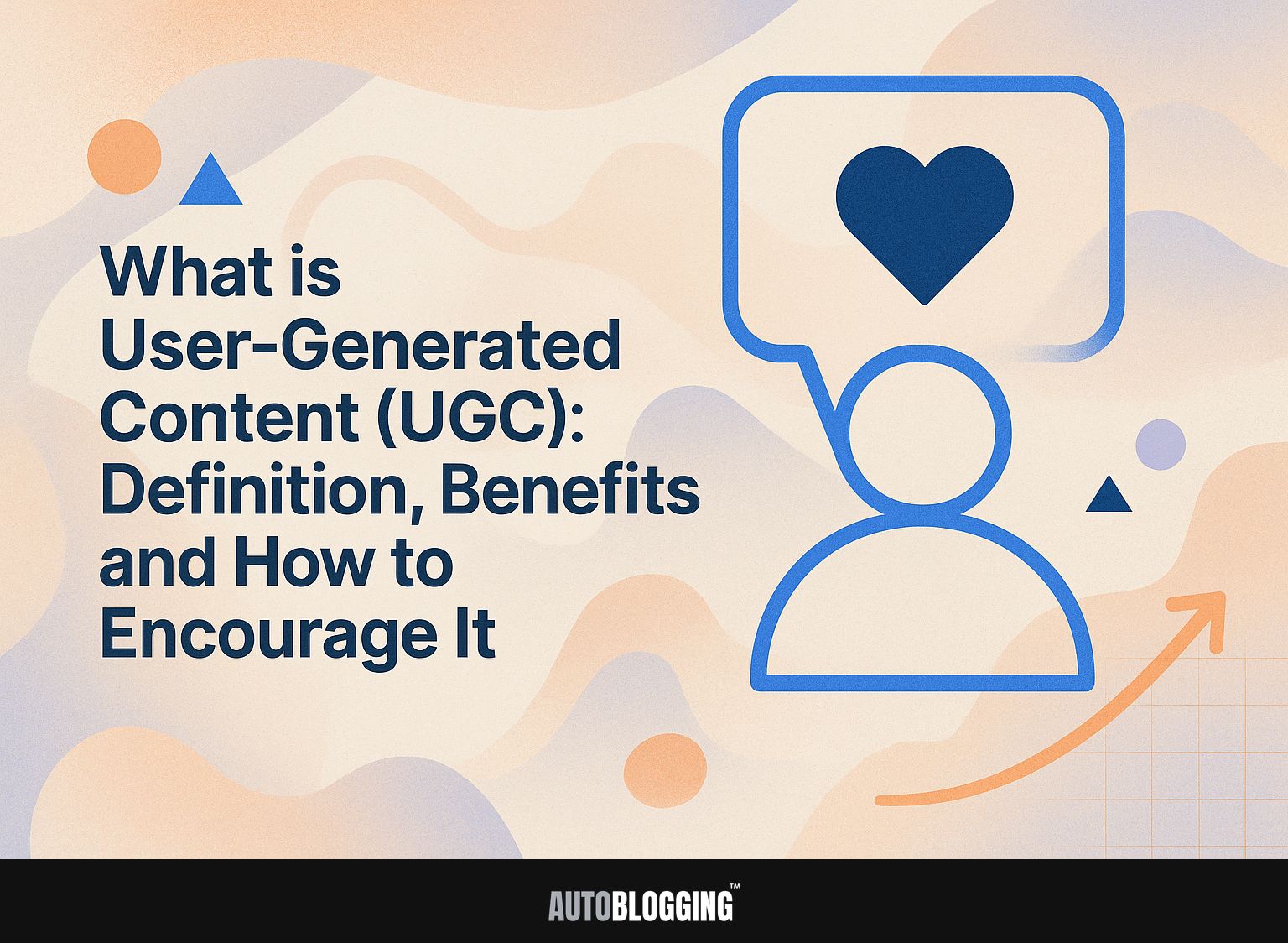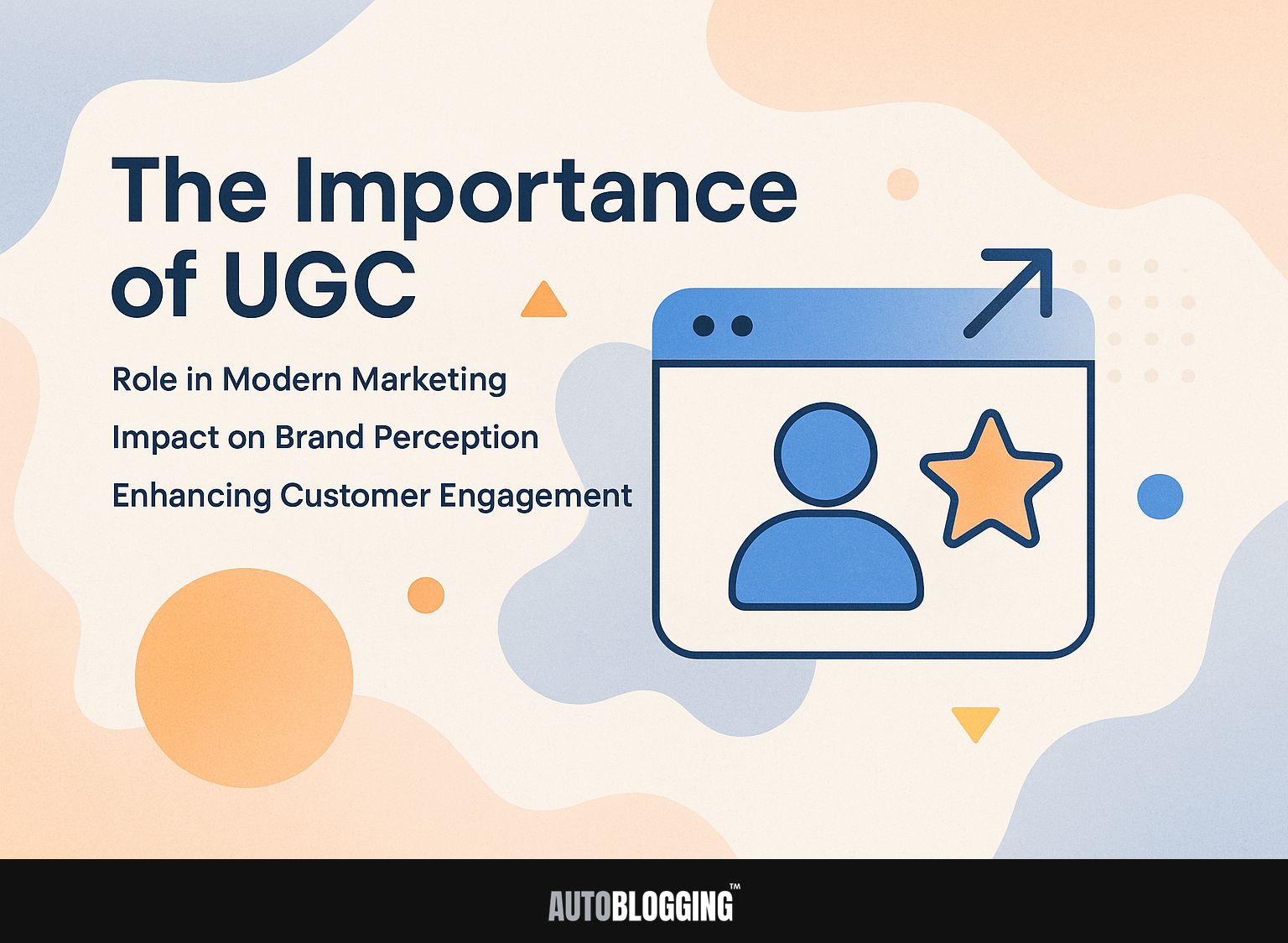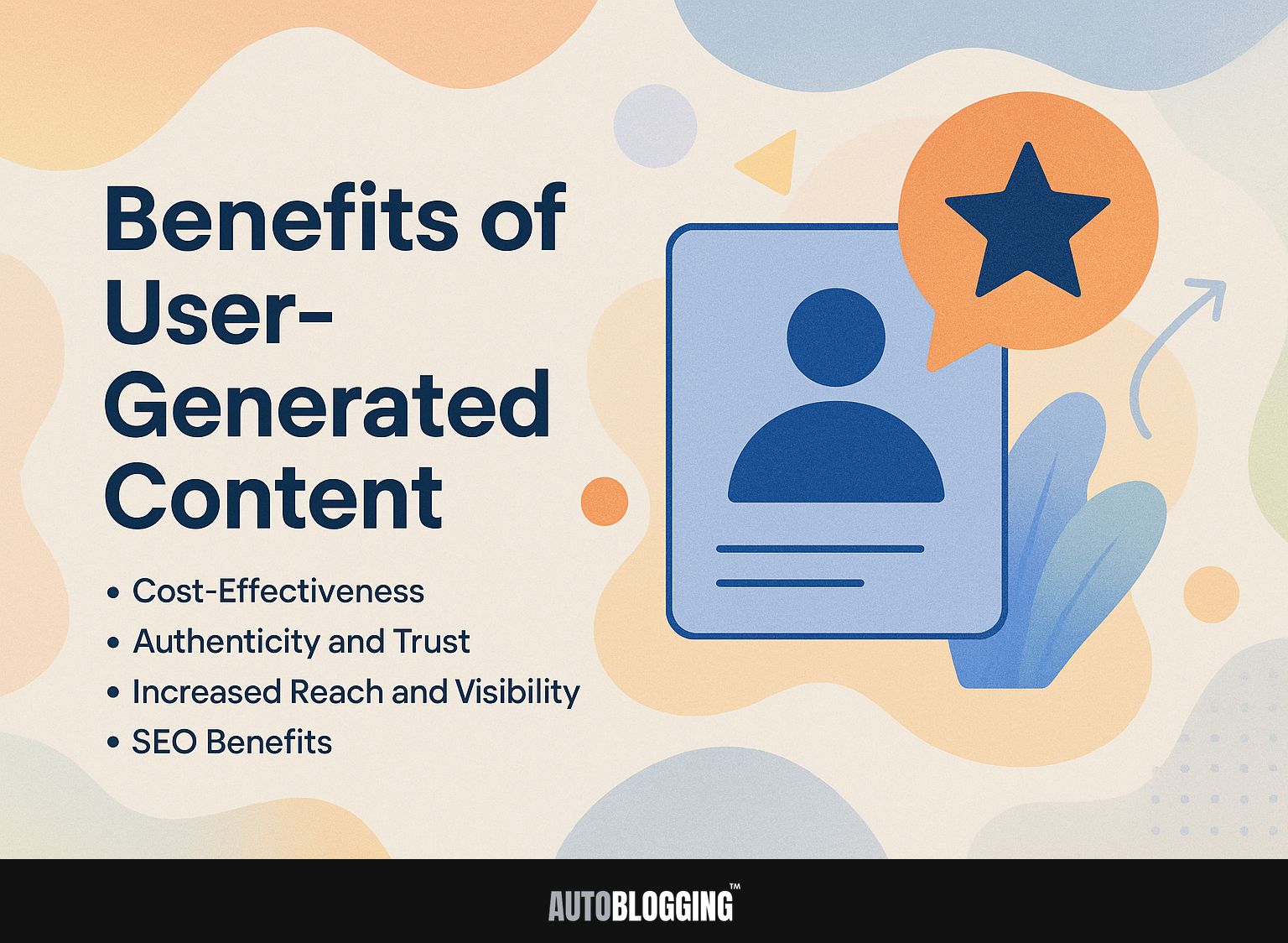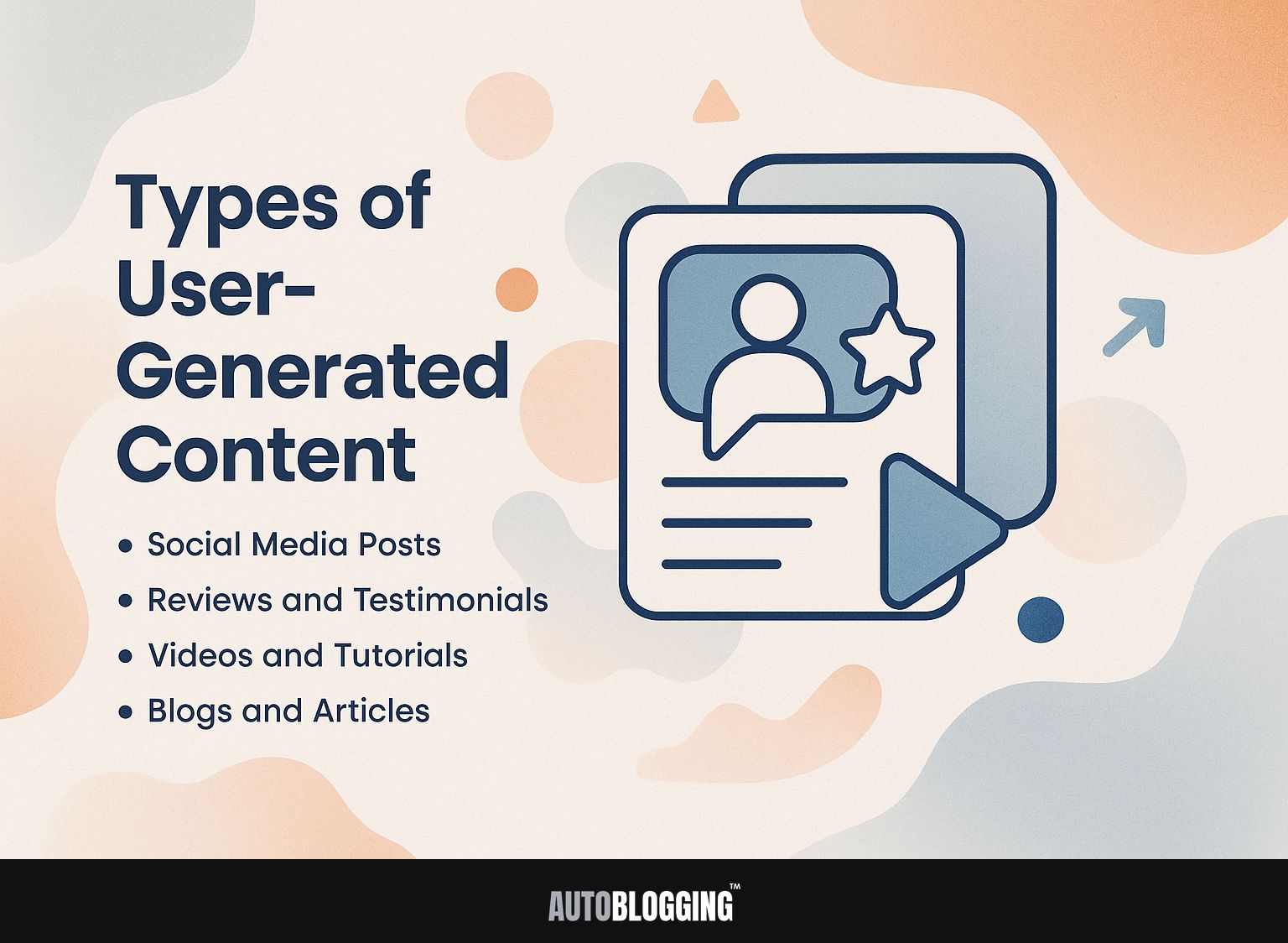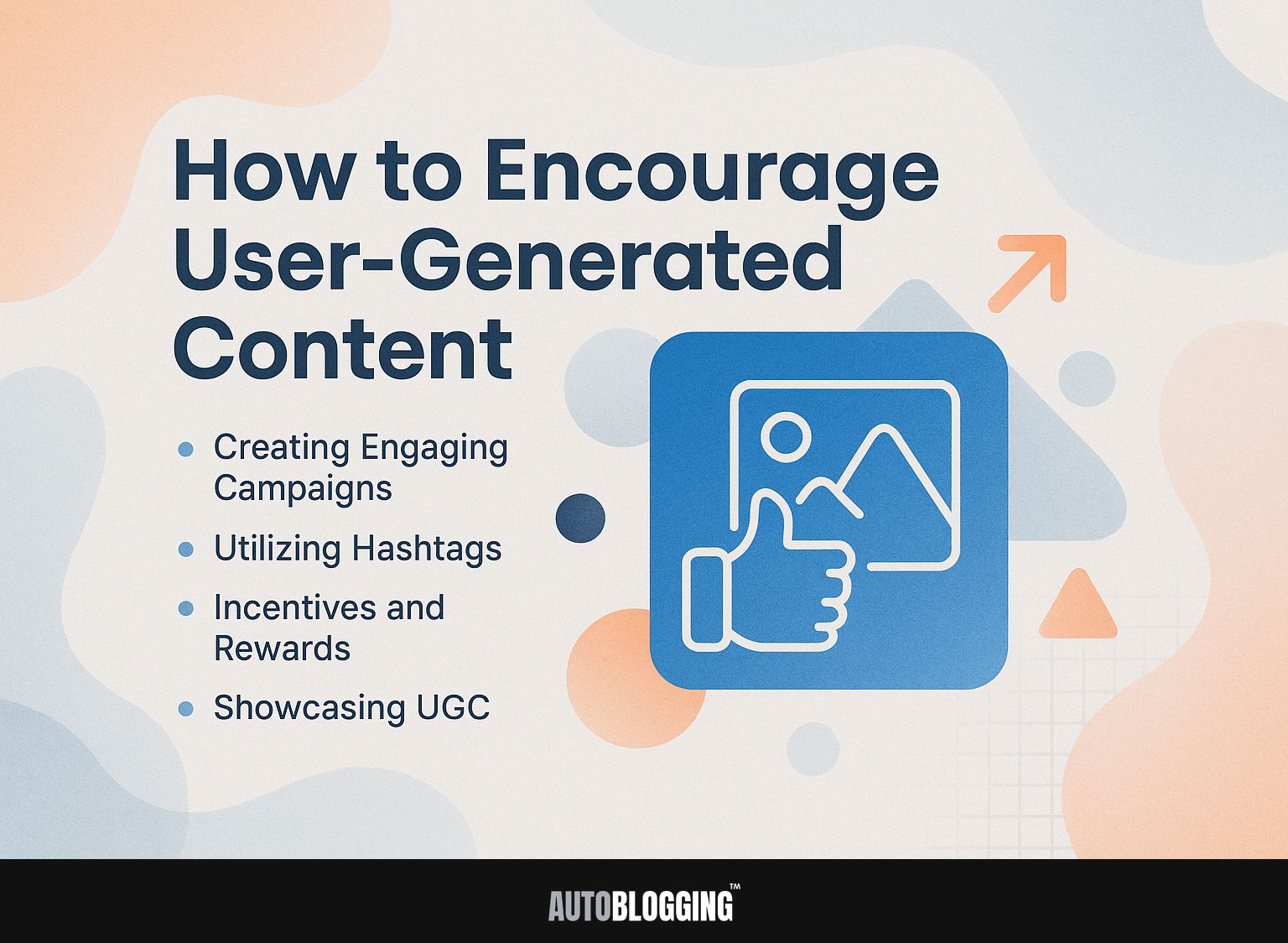User-created content has become a key part of genuine marketing online. With platforms like Squarespace and information from Nielsen showing its success, UGC marketing grows through real customer feedback posted on social media. This article explains what User-Generated Content (UGC) is, its many advantages, and useful ways to promote it. This helps your brand gain trust and involvement that only actual customers can offer.
Key Takeaways:
- User-generated content (UGC) is any material made and posted by people, not businesses, on social media or other sites.
- User-generated content is important for today’s marketing because it improves how people view a brand, leads to more interaction with customers, and provides affordable advantages for search engine optimization.
- Brands can encourage UGC by creating engaging campaigns, utilizing hashtags, offering incentives, and showcasing UGC. Measuring its impact can be done through KPIs and analyzing engagement metrics.
Contents
- The Importance of UGC
- Benefits of User-Generated Content
- Types of User-Generated Content
- How to Encourage User-Generated Content
- Measuring the Impact of UGC
- Frequently Asked Questions
- 1. What is User-Generated Content (UGC)?
- 2. What are the benefits of User-Generated Content (UGC)?
- 3. How can I encourage User-Generated Content (UGC)?
- 4. Why is User-Generated Content (UGC) important for businesses?
- 5. Can User-Generated Content (UGC) be used for marketing purposes?
- 6. Is there a risk to using User-Generated Content (UGC) for businesses?
1. Definition of UGC
User-Generated Content (UGC) includes things like photos, videos, or reviews created by individuals, not by businesses.
UGC can take many forms, including social media posts, customer reviews on platforms like Yelp, or video testimonials on YouTube. These content types encourage community interaction and provide strong evidence of social credibility.
For instance, a study shows that 79% of consumers state UGC significantly influences their purchasing decisions. Brands can show user-generated content by displaying customer reviews on product pages or creating hashtags for users to share their experiences, which builds trust and authenticity.
2. History and Evolution of UGC
The concept of UGC has evolved dramatically from simple online reviews in the early 2000s to a key element in brand marketing strategies today.
The increasing popularity of social media platforms like Instagram and TikTok has played a significant role in this change. For instance, a study showed that UGC accounts for 79% of online marketing effectiveness, reflecting its power in customer engagement and trust.
From 2010 to 2020, user-generated content increased by more than 150%. Brands started using this content to make their products appear more genuine. When brands use customer photos or reviews in their marketing, it helps bring people together and increases sales a lot.
The Importance of UGC
UGC helps build stronger connections between brands and consumers and is important for shaping how people view and trust a brand.
1. Role in Modern Marketing
Brands such as GoPro and lululemon now regularly use content made by customers in their marketing plans to improve how they tell their brand stories. These brands have gained a lot of success by using content created by users in their marketing.
GoPro uses videos and photos shared by customers to display products being used and to develop genuine marketing campaigns that people can connect with. This method has greatly increased interest, leading to more social media shares and stronger brand loyalty.
In the same way, lululemon shows customer reviews and images on their website, which builds trust and increases sales. Both brands show that real user-generated content can lead to more interaction, turning customers into supporters of the brand.
2. Impact on Brand Perception
Research by Nielsen shows that 92% of consumers trust recommendations from individuals over brands, highlighting UGC’s influence on brand perception.
Brands like GoPro and Starbucks have effectively used content created by their users to improve their reputation following problems.
For example, after facing quality concerns, GoPro encouraged users to share their incredible videos, showcasing the product’s capabilities and restoring trust. In a similar situation, during a controversy, Starbucks used social media to share customer stories, showing its dedication to community principles.
By sharing real experiences and starting conversations with customers, these brands regained trust and strengthened their relationships, showing how UGC helps in recovering from crises.
3. Enhancing Customer Engagement
UGC greatly increases how much customers interact with a brand. Brands have seen their engagement rates rise by as much as 28% when they include content created by their customers.
Brands can make use of user-generated content (UGC) by asking customers to post about their experiences on social media and tag the brand.
Using hashtags can help build a group of followers for your brand, allowing you to find and display customer stories easily. Tools like TINT or Yotpo can help aggregate these posts, highlighting authentic customer interactions on your website or storefront.
A Nielsen study reveals that 76% of consumers trust UGC more than traditional advertising, further solidifying its role in enhancing customer loyalty and driving purchases.
Benefits of User-Generated Content
User-Generated Content gives brands many benefits, such as saving money and improving genuineness, helping develop successful marketing strategies.
1. Cost-Effectiveness
Using UGC can cut content production costs by more than half because brands use content made by customers instead of costly professional campaigns.
For instance, brands like Well Traveled have combined UGC with traditional marketing, resulting in campaigns that significantly cut down expenses.
By sourcing images and testimonials from customers, they saved approximately $20,000 in a single campaign. Tools like Yotpo and TINT help gather user-generated content, allowing companies to easily use this content in their marketing plans.
Tools like Canva can help users create visuals that fit brand styles and keep production costs down.
2. Authenticity and Trust
Brands using user-generated content see a 50% rise in consumer trust, because real customer experiences connect better than slick brand advertisements.
Coca-Cola’s ‘Share a Coke’ campaign encouraged people to post their own stories and photos with their custom bottles on social media. This resulted in a 10% increase in sales.
GoPro uses photos and videos taken by users to highlight their products, turning customers into representatives of the brand.
Tools like Yotpo and TINT can help brands collect and display UGC seamlessly on their websites. By building real connections through UGC, brands increase authenticity and grow a loyal customer base.
3. Increased Reach and Visibility
User-Generated Content amplifies brand reach, with UGC posts generating 6.9 times more engagement than brand-generated content on social media.
Brands can benefit from UGC by asking customers to share their experiences through campaigns. For example, Coca-Cola’s #ShareaCoke campaign led to a 7% rise in sales, as people posted photos with bottles featuring their names.
Tools like Yotpo or TINT let brands gather and organize these posts, supporting community engagement and genuine interactions. Use content created by users in your marketing materials and social media, as research indicates this can increase visibility by up to 50%. This strategy increases brand awareness and builds trust with potential customers.
4. SEO Benefits
User-Generated Content can increase SEO rankings by up to 23% because it leads to a variety of content that improves search engine visibility.
Adding user reviews, testimonials, and social media posts to your website can make your content more relevant. Tools like Moz and SEMrush allow for tracking improvements; for instance, you can analyze changes in keyword rankings and organic traffic after integrating UGC.
Encourage customers to share their experiences on platforms like Instagram or Facebook, and use plugins to display these feeds on your site. This approach encourages involvement from the community and helps search engines rank your pages higher because of the diverse and detailed content.
Types of User-Generated Content
Knowing the different types of user-generated content is important for brands wanting to make the most of consumer creativity.
1. Social Media Posts
Social media posts constitute a prominent form of UGC, with platforms like Instagram serving as hubs for brand-related consumer content. Content created by users greatly increases interaction and helps people notice the brand more.
Coca-Cola’s ‘Share a Coke’ campaign encouraged people to post photos of bottles featuring their names. This resulted in over 500,000 photos being shared and increased sales by 2%.
In the same way, GoPro uses user-generated content by featuring videos made by their users on their official platforms, which builds trust and encourages new customers.
Brands can effectively impact by creating hashtag campaigns, hosting contests, and sharing user-generated content, strengthening community ties and boosting brand loyalty.
2. Reviews and Testimonials
Customer feedback and testimonials are important types of user-generated content that help inform potential buyers and increase trust in the brand.
Studies show that 92% of shoppers read online reviews before buying something, and 80% of them trust these reviews like personal advice.
Websites like Trustpilot and Yelp help businesses display good reviews. To make the most of this, ask customers for reviews after they buy something, reply to their feedback quickly, and show ratings clearly on your website.
Think about adding review widgets from these platforms to increase your visibility and trustworthiness, which can lead to higher conversion rates.
3. Videos and Tutorials
User-made videos and tutorials can greatly improve how people understand and interact with a product, as shown by GoPro’s success with videos sent in by users.
GoPro’s marketing strategy prominently features videos submitted by users, showcasing their products in action. This method resulted in a 300% rise in interaction on their social media channels, showing how effective user-generated content (UGC) can be.
Similarly, Blendtec’s “Will It Blend?” series, featuring users blending unconventional items, resulted in a 500% increase in sales.
Brands wanting to use video content created by users should encourage customers to share their experiences through contests or hashtags. Use platforms like Instagram and TikTok to increase visibility and engagement.
4. Blogs and Articles
Blogs and articles written by users are a strong form of UGC, giving real opinions that connect with readers.
Brands can encourage user-generated content by hosting themed contests or giveaways that inspire creativity.
For example, GoPro ran a campaign where users shared videos and photos taken with their GoPro cameras. This filled their site with interesting user-generated content and created a group of enthusiastic users.
Brands can use platforms like Instagram and TikTok to start challenges that encourage fans to share their experiences. Engaging with the content by liking, sharing, and reposting helps build brand credibility, showing genuine interest and creating trust with potential customers.
How to Encourage User-Generated Content
Getting customers to create content needs careful planning and inventive ideas that make them want to share their own creations.
1. Creating Engaging Campaigns
Brands like lululemon have seen a 30% increase in engagement by creating campaigns that invite user participation through hashtags and challenges.
To design a successful user-generated content (UGC) campaign, start with clear objectives. For example, ask customers to share their fitness progress using a specific hashtag. Implement tools like Instagram Stories and TikTok challenges to maximize participation.
A well-known example is Coca-Cola’s “Share a Coke” campaign, which led to more than 500,000 photos on social media, greatly increasing brand visibility. Reshare participants’ content to make them feel connected and increase brand loyalty.
Effective hashtag strategies can increase UGC submissions by over 25%, helping brands to organize and promote user content.
Brands can use hashtags effectively by making unique tags that connect with their audience.
Coca-Cola’s #ShareaCoke campaign encouraged fans to share photos with bottles featuring their names, resulting in more user-generated content.
Similarly, the clothing brand Aerie uses #AerieREAL to promote body positivity, inviting customers to post unfiltered images and stories.
Tools like Hashtagify can find popular hashtags, and platforms like Instagram provide information on how hashtags are doing. This helps brands improve their user-generated content strategies.
3. Incentives and Rewards
Giving rewards can increase user-generated content creation. Brands like Starbucks use reward programs to motivate customers to join in.
Starbucks famously incentivizes user-generated content (UGC) through its ‘Starbucks Rewards’ program, which allows customers to earn points for purchases, thus encouraging them to share their experiences online.
Running contests, like Nikon’s photo challenge, can drive engagement by offering prizes for the best submissions. Brands should consider providing discounts, exclusive access, or gift cards as rewards.
By promoting these rewards on social media and through email campaigns, companies can significantly increase user-generated content submissions, creating a stronger community around their brand.
4. Showcasing UGC
Showing content made by users gives credit to those who create it and encourages more people to interact with the brand, building a sense of community. To show user-generated content well, brands can use different methods.
Displaying customer photos on social media can significantly increase engagement-posts featuring real users can result in interaction rates rising by as much as 6.9 times.
Creating a dedicated section on your website for UGC, such as a gallery of customer photos or testimonials, can strengthen credibility.
Tools like Instagram’s ‘Shop’ feature or Facebook’s album function allow brands to collect and showcase user content easily.
Encouraging customers to share their experiences through contests or giveaways can increase participation.
Measuring the Impact of UGC
It’s important to measure how User-Generated Content affects marketing strategies to see how well it works.
1. Key Performance Indicators (KPIs)
Important metrics like how often users interact, how much attention your brand gets, and how many users take the desired action are essential for assessing the success of User-Generated Content.
To effectively track these KPIs, use tools like Google Analytics to check engagement numbers, such as page views and average session length.
For social media, tools like Hootsuite or Sprout Social can show how often people talk about your brand compared to your competitors.
Conversion rates can be assessed through goal tracking in Google Analytics, enabling you to see how many users complete desired actions.
Regularly reviewing these numbers will help you improve your UGC plan, ensuring it aligns with your business goals.
2. Analyzing Engagement Metrics
Looking at how people interact with their content helps brands make their user-generated content more relevant and helps them connect better with their audience.
To successfully examine engagement statistics, use Hootsuite for checking social media activity and Google Analytics for tracking website visits.
Track specific metrics such as likes, shares, and comments on social media, alongside time spent on page and bounce rate on your site.
A Hootsuite report can show which posts got the most engagement, helping to plan content. Google Analytics can show which user-generated content draws visitors, helping you plan strategies to keep your audience interested later on.
Frequently Asked Questions
1. What is User-Generated Content (UGC)?
User-Generated Content (UGC) is content like text, images, videos, or reviews made and shared by users on websites, instead of being made by businesses or groups. This can include social media posts, blog comments, and product reviews.
2. What are the benefits of User-Generated Content (UGC)?
User-Generated Content has many advantages. It can make your brand appear more authentic and trustworthy, improve search engine rankings, and provide helpful information and customer feedback. UGC also helps to create a sense of community and engagement with your audience.
3. How can I encourage User-Generated Content (UGC)?
There are many methods to motivate people to create content. Some strategies include creating a branded hashtag for users to use, running social media contests or challenges, and featuring user-generated content on your website or social media channels. You can also engage with your audience and ask for their opinions, reviews, and feedback.
4. Why is User-Generated Content (UGC) important for businesses?
Content made by users is important for businesses because it can build customer loyalty and trust, widen their online presence and reach more people, and give helpful feedback and details from customers. It also allows businesses to create a more authentic and personal connection with their audience, which can lead to increased sales and customer retention.
5. Can User-Generated Content (UGC) be used for marketing purposes?
Yes, UGC can be a powerful marketing tool for businesses. It can be used to showcase customer experiences and satisfaction, promote products or services, and build brand awareness. UGC can also be repurposed and shared on various marketing channels, such as social media, websites, and email campaigns.
6. Is there a risk to using User-Generated Content (UGC) for businesses?
There is a potential risk to using UGC, as businesses do not have control over what content is being created and shared by users. This can lead to negative or inappropriate content being associated with your brand. By establishing clear rules and continuously checking and controlling user-generated content, this risk can be reduced.

